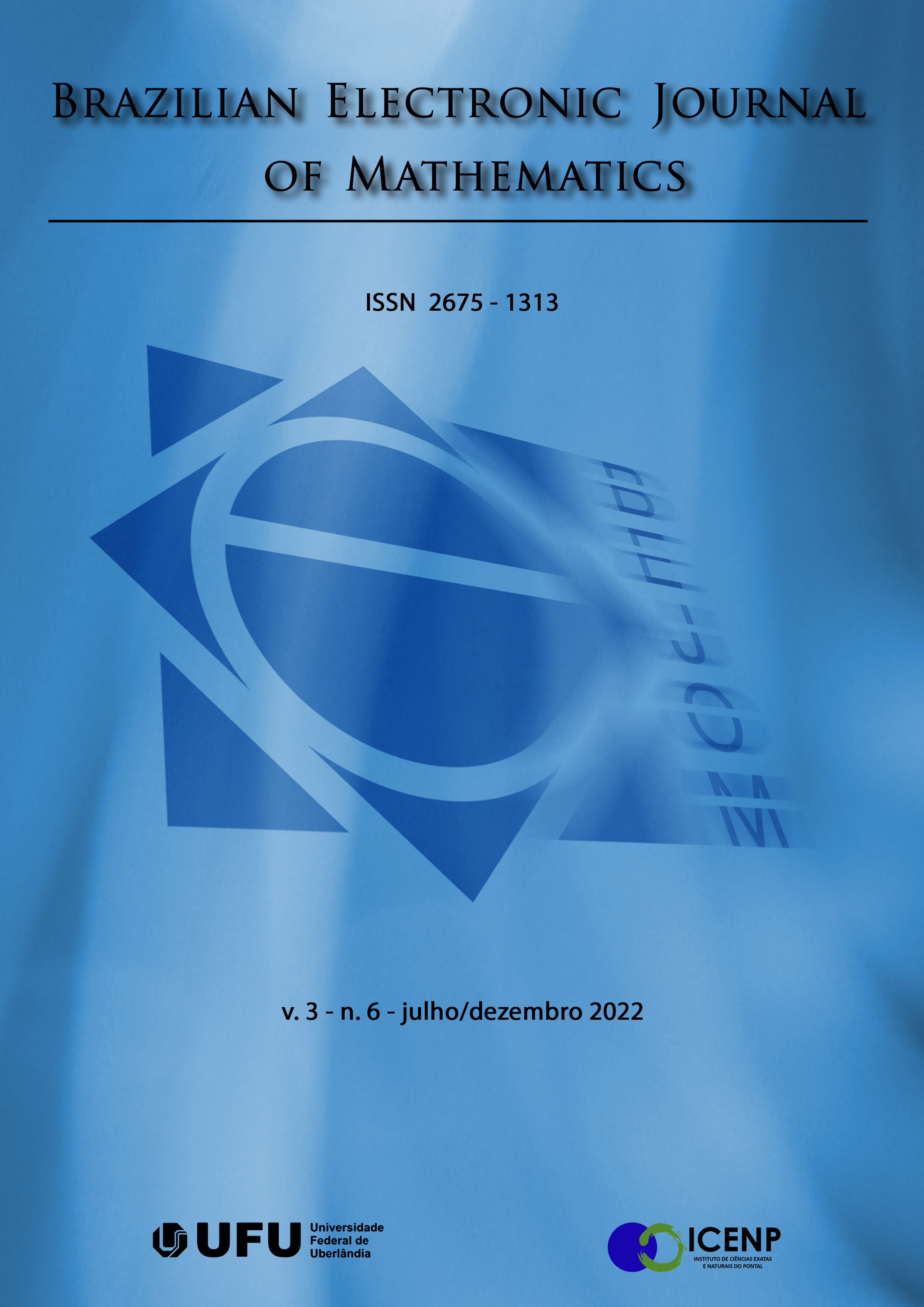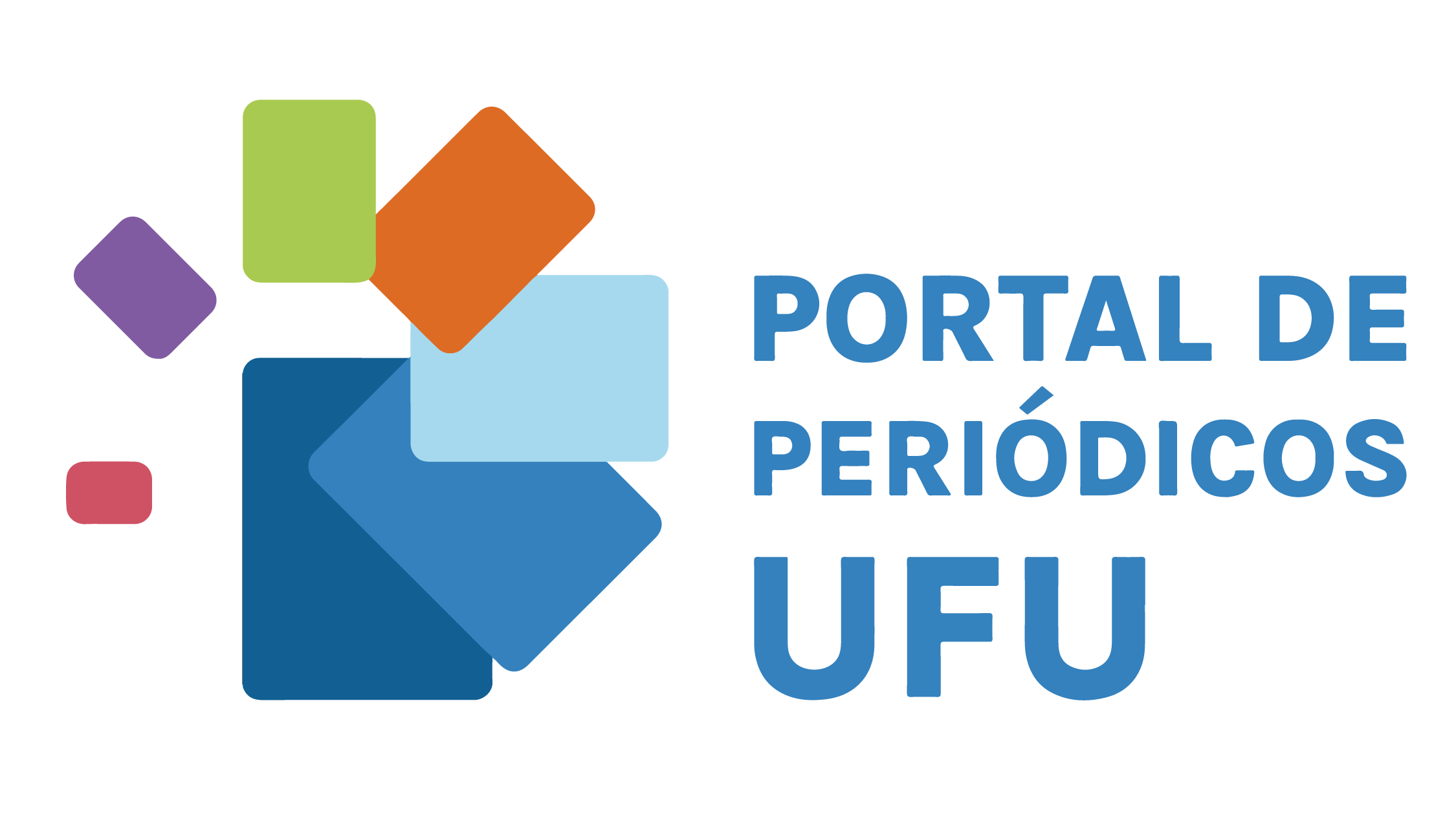Os quatérnios circulares hiperbólicos e os números hibrinomiais de Perrin
DOI:
https://doi.org/10.14393/BEJOM-v3-n6-2022-65889Palabras clave:
Números hiperbólicos duais, Hibrinomiais, Quatérnios hiperbólicos circulares, Sequência de PerrinResumen
Estudos referentes as sequências lineares e recorrentes estão sendo realizados na literatura de Matemática Pura, ampliando assim o universo de evolução de sequências. De posse do estudo dos quatérnios circulares hiperbólicos de Fibonacci, foi possível definir para esta pesquisa, os quatérnios circulares hiperbólicos de Perrin. Além disso, são introduzidos os números hibrinomiais de Perrin, tendo como base os números híbridos e polinomiais de Perrin. Diante disso, são estudadas algumas propriedades algébricas dos quatérnios hiperbólicos circulares de Perrin, resultando na obtenção da sua respectiva função geradora, fórmula de Binet e forma matricial.
Descargas
Referencias
ALVES, F. R. V.; CATARINO, P. M. M. C.; VIEIRA, R. P. M.; MANGUEIRA, M. dos S. Teaching Recurrent Sequences in Brazil using Historical facts and graphicalillustrations,Acta Didactica Napocensia, vol. 13, n. 1, p. 87-104, 2020.
ALVES, F. R. V.; VIEIRA, R. P. M.; CATARINO, P. M. M. C. Visualizing the Newtons Fractal from the Recurring Linear Sequence with Google Colab: An Exampleof Brazil X Portugal Research, International Electronic Journal of Mathematics Education, vol. 15, n. 3, p. 1-19, 2020.
AYDIN, F. T. Circular-hyperbolic Fibonacci quaternions. Notes on Number Theory and Discrete Mathematics, vol. 26, n. 2, p. 167-176, 2020.
PENNESTRI, E.; STEFANELLI, R. Linear Algebra and Numerical Algorithms Using Dual Numbers. Multibody System Dynamics, vol. 18, n. 3, p. 323-344,2007.
CIHAN, A.; AZAK, A. Z.; GUNGOR, M. A.; TOSUN, M.V. A study of Dual Hyperbolic Fibonacci and Lucas numbers.An. St. Univ. Ovidius Constanta, vol. 27,n. 1, p. 35-48, 2019.
DATTOLI, G.; LICCIARDI, S.; PIDATELLA, R. M.; SABIA, E. Hybrid complex numbers: The matrix version. Adv. Appl. Clifford Algebras, vol. 28, n. 3, p. 58,2018.
HORZUM, T; KOCER, E. G. On some properties of Horadam polynomials. Inter-national Mathematical Forum, vol. 4, n.25, p. 1243-1252, 2009.
HAUKKANEN, P. A Note On Horadam?s Sequence.The Fibonacci Quart., vol.40, n. 4, p. 358-361, 2002.
JANCEWICZ, B. The extended Grassmann algebra of R3, in Clifford (Geometric) Algebras with Applications and Engineering. Birkhauser, Boston, p. 389-421, 1996.
KIZILATES, C. A note on Horadam hybrinomials. 2020010116 (doi:10.20944/preprints202001.0116.v1), p. 1-10, 2020.
KNUTH, D. E. The Art of Computer Programming. Addison-Wesley, Reading, MA, vol.3, 2nd edition, 417, 1998.
MANGUEIRA, M. et al. The hybrid numbers of Padovan and some identities.2020010116 . Annales Mathematicae Silesianae, vol. 34, n. 2, p. 256-267, 2020.
ORHAN, D.; HAMZA, M. On the Split (s,t)-Padovan and (s,t)-Perrin Quaternions. International Journal of Applied Mathematics and Informatics, vol. 13, p. 25-28, 2019.
OLIVEIRA, R. R. de O. Engenharia Didática sobre o Modelo de Comple-xificação da Sequência Generalizada de Fibonacci: Relações Recorrentes N-dimensionais e Representações Polinomiais e Matriciais. Mestrado Acadêmico em Ensino de Ciências e Matemática - Instituto Federal de Educação, Ciência e Tecnologia do Estado do Ceará (IFCE), 2018.
OZDEMIR, M.; HAMZA, M. Introduction to Hybrid Numbers. Adv. Appl. Clifford Algebras, vol. 28, n. 11, 2018.
SHOHAN, M. On grassmann’s products and clifford’s dual unit. International Symposium on History of Machines and Mechanisms Proceedings HMM, p.173-180, 2000.
SOBCZYK, G. The Hyperbolic Number Plane. The College Mathematics Journal,vol. 26, n. 4, p. 268-280, 1995.
SOYKAN, Y.; GOCEN, M. Properties of hyperbolic generalized Pell numbers. Notes on Number Theory and Discrete Mathematics, vol. 26, n. 4, p. 136-153, 2020.
SUGUMARAN, A.; RAJESH, K. Os números duais de Padovan. I International Journal of Pure and Applied Mathematics, vol. 114, n. 6, p. 131-137, 2017.
VIEIRA, R. P. M.; ALVES, F. R. V; CATARINO, P. M. C. A historic alanalys is of the padovan sequence. International Journal of Trends in Mathematics Education Research, vol. 3, n. 1, p. 8-12, 2020.
VIEIRA, R. P. M.; ALVES, F. R. V. Explorando a sequência de Padovan através de investigação histórica e abordagem epistemológica. Boletim GEPEM, vol. 74, p.161-169, 2019.
Descargas
Publicado
Número
Sección
Licencia
Derechos de autor 2022 BRAZILIAN ELECTRONIC JOURNAL OF MATHEMATICS

Esta obra está bajo una licencia internacional Creative Commons Atribución-NoComercial 4.0.
- Los artículos publicados a partir de 2025 están licenciados bajo la licencia CC BY 4.0. Al enviar el material para su publicación, los autores aceptan automáticamente las directrices editoriales de la revista y afirman que el texto ha sido debidamente revisado. Está prohibido el envío simultáneo de artículos a otras revistas, así como la traducción de artículos publicados en esta revista a otro idioma sin la debida autorización.
- Los artículos publicados antes de 2025 están licenciados bajo la licencia CC BY-NC 4.0.









